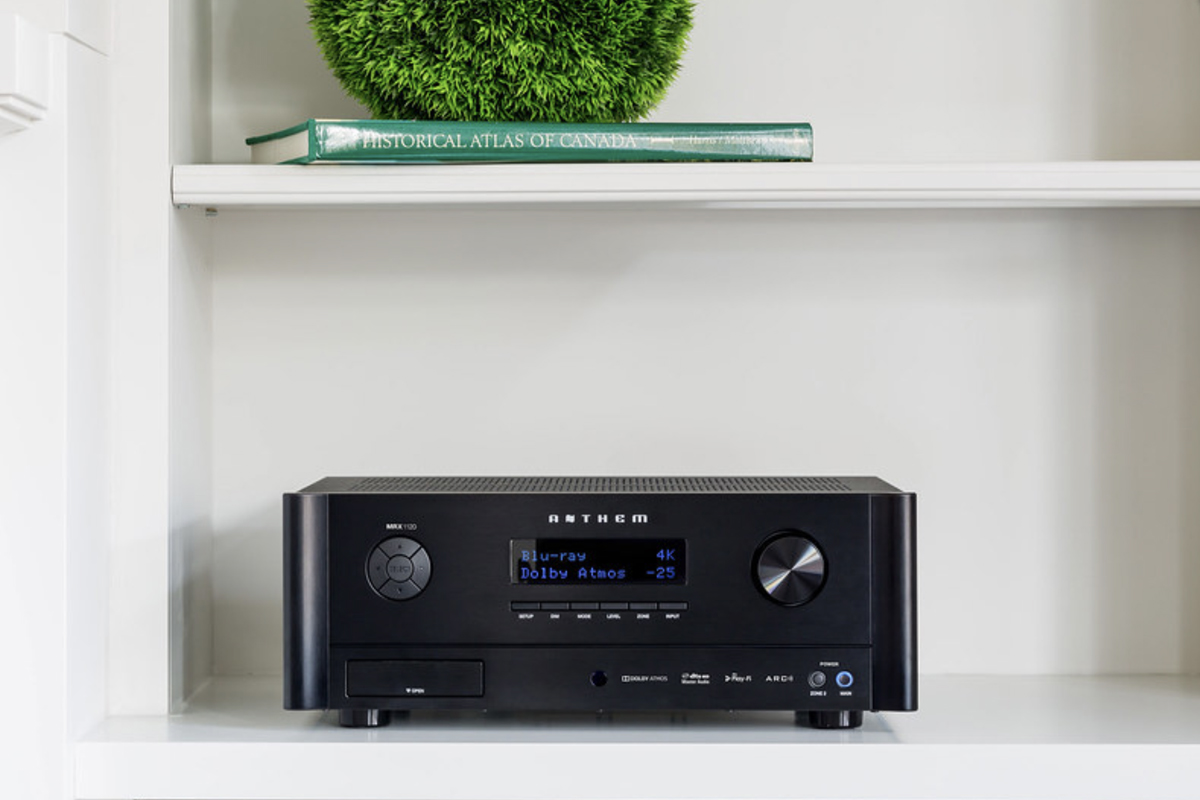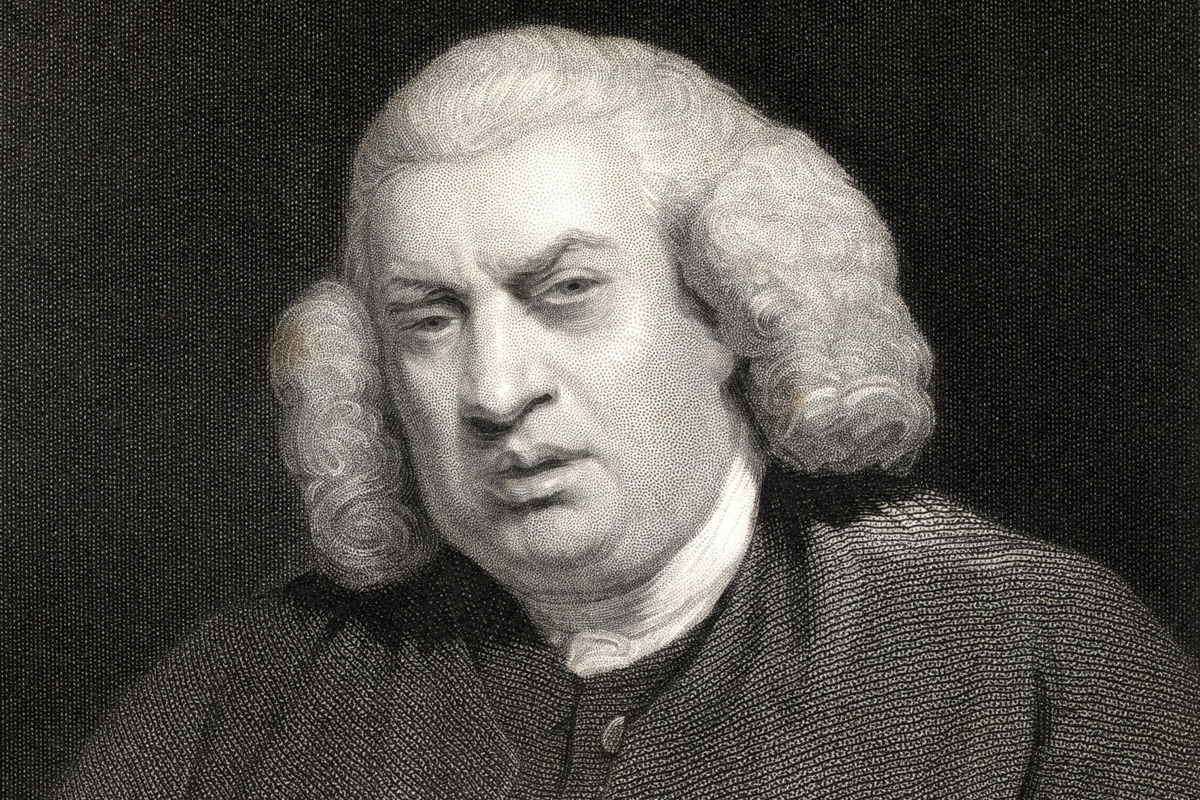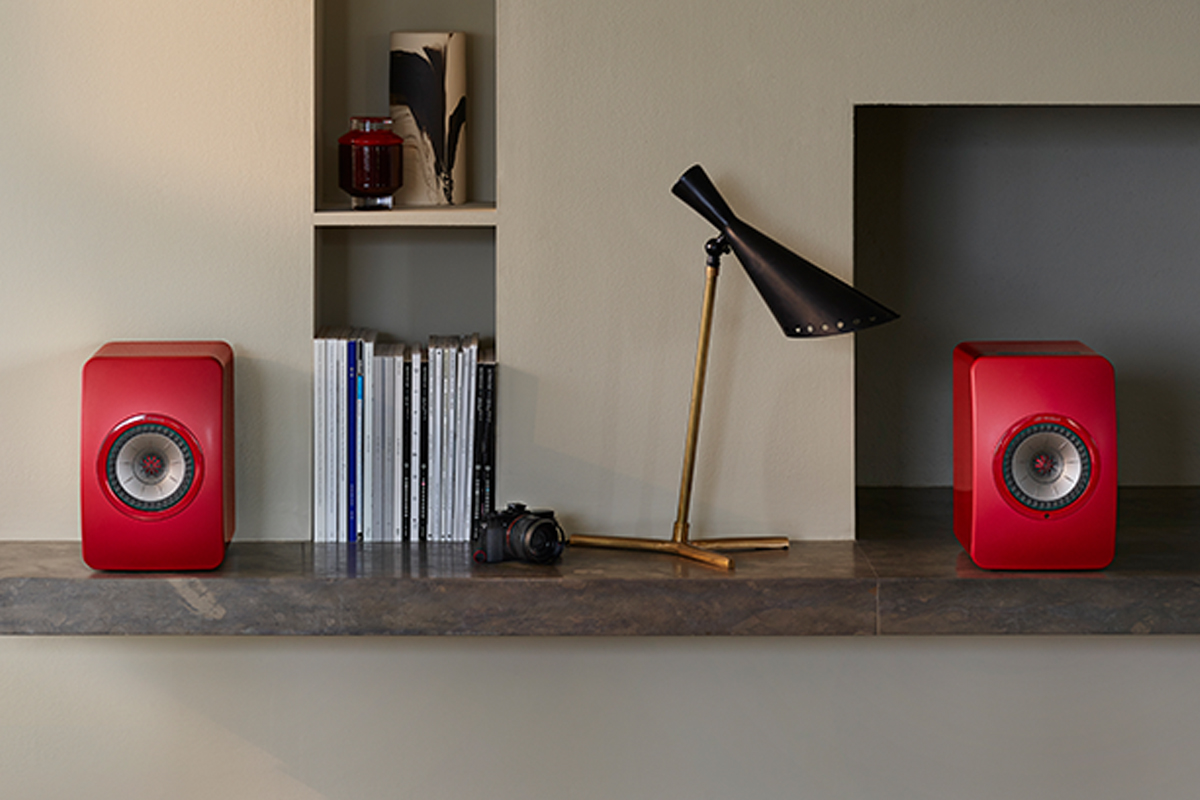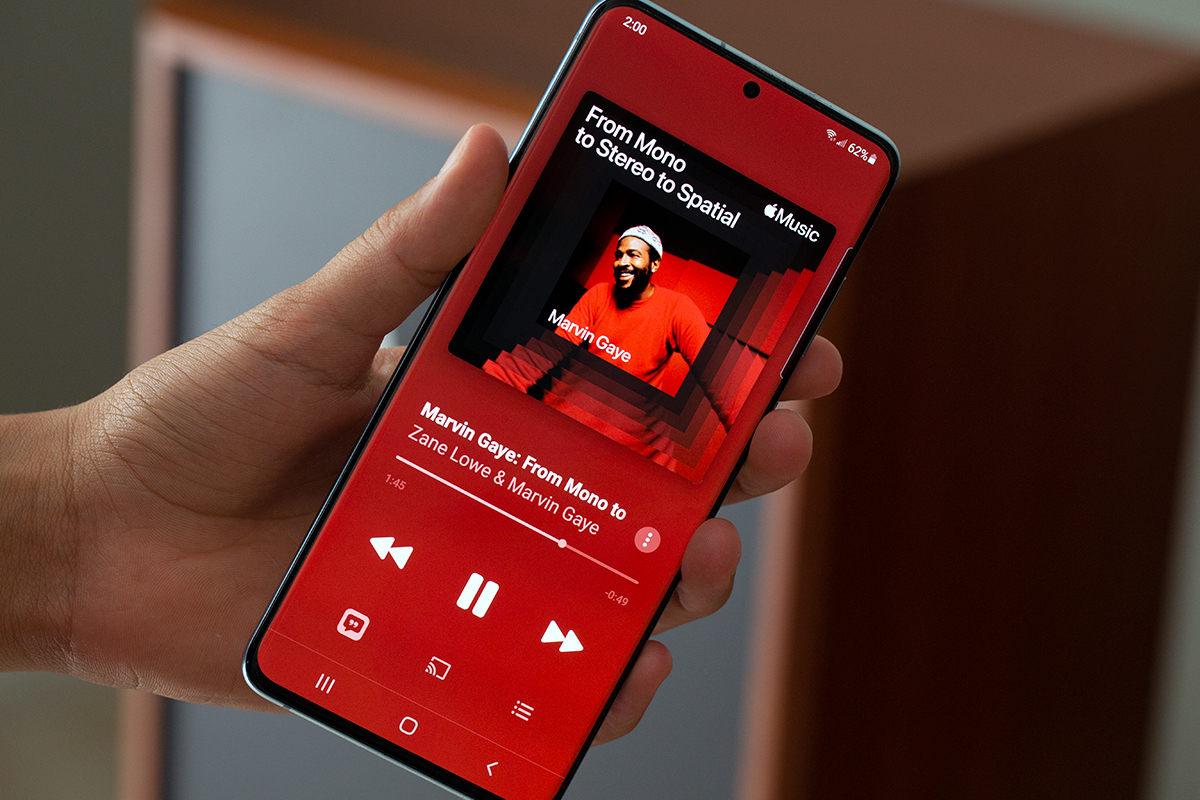
Wayback Playback
- Written by: Gordon Brockhouse
Across the SoundStage! Network, you’ll find coverage of all kinds of audio products: high-end gear on SoundStage! Ultra, affordable components on SoundStage! Access, headphones and accessories on SoundStage! Solo, lifestyle audio here on SoundStage! Simplifi, portable Bluetooth speakers on SoundStage! Xperience, news and events on SoundStage! Global, and all manner of gear on the mothership—SoundStage! Hi-Fi.

Bowers & Wilkins Zeppelin Wireless Speaker
- Written by: Gordon Brockhouse
If I had to name two products that laid the groundwork for Simplifi’d hi-fi, they’d be Apple’s iPod and Bowers & Wilkins’s Zeppelin iPod speaker. Before Apple launched the iPod in 2001, most people listened to their own music on physical media, one disc or tape at a time. The iPod let them store an entire music library on one pocketable device and play tracks at random.

NAD Masters M10 V2 Streaming Integrated Amplifier
- Written by: Vince Hanada
Note: for the full suite of measurements from the SoundStage! Audio-Electronics Lab, click this link.
The original NAD Masters M10 streaming amplifier, introduced in January 2019, is a compact, versatile unit that can form the heart of a modern high-fidelity system. It has everything you can imagine you’d want in an integrated amplifier: NAD’s BluOS streaming function, a two-channel amplifier, Dirac Live room correction, a DAC, digital and analog inputs, and more. The M10 fits NAD’s “just add speakers” philosophy perfectly. Gordon Brockhouse reviewed the M10 on this site in May 2019—it received a Reviewers’ Choice award and was subsequently named a SoundStage! Network Product of the Year.
Read more: NAD Masters M10 V2 Streaming Integrated Amplifier

Listen While You Work
- Written by: Gordon Brockhouse
One of the occupational hazards of writing for an audiophile website is a condition photography enthusiasts call GAS—Gear Acquisition Syndrome. After hearing about a new lens (or amplifier), you decide you really, really need this new toy, even though the gear you already own is more than adequate for your needs. During my adult life, I’ve experienced GAS hundreds—maybe thousands—of times, and succumbed to it more often than I care to admit.

Mission LX Connect Wireless Active Speakers and Hub
- Written by: Gordon Brockhouse
The British hi-fi brand Mission is best known for its passive loudspeakers; but, late last year, the company introduced a lifestyle music system that combines a wireless hub with a pair of active bookshelf loudspeakers. Priced at $1699.99 (all prices in USD), the LX Connect was designed and engineered in the UK, with acoustic engineering by Mission and electronic design by its sister company Audiolab. Both brands are part of the International Audio Group (IAG), a Chinese company that also owns Castle Acoustics, Leak, Luxman, Quad, and Wharfedale.
Read more: Mission LX Connect Wireless Active Speakers and Hub

The State of Streaming—2022
- Written by: Gordon Brockhouse
Was 2021 the year that lossless and hi-rez music streaming became mainstream? Last year, Spotify promised it would start delivering lossless music, but failed to deliver. Three months later, Apple announced plans to offer lossless and hi-rez content, and started delivering shortly thereafter. Amazon Music HD had been offering lossless and hi-rez music since 2019; but following Apple’s move, Amazon reduced its price for the service. These aggressive moves by major providers like Apple and Amazon led several smaller streaming services to revamp their own pricing plans in 2021.

Linn Series 3 Active Loudspeakers
- Written by: Gordon Brockhouse
When Linn Products announced its Series 3 active loudspeaker in October 2019, the Scottish company called it “the world’s best-sounding wireless speaker.” Given that bold claim, Linn chose an appropriate launch venue for the speaker. For several months, the Series 3 was available exclusively at Linn’s flagship showroom in Harrods department store in London, England. In 2020, Linn rolled out the Series 3 to its worldwide dealer network.

Bang & Olufsen Beolab 28 Active Loudspeakers
- Written by: Gordon Brockhouse
 Is there an audio manufacturer whose products exemplify Simplifi’d hi-fi more than Denmark’s Bang & Olufsen? I doubt it. Formed in 1925, B&O started offering “convenient, lifestyle-oriented hi-fi” components not long after the word “lifestyle” had been coined.
Is there an audio manufacturer whose products exemplify Simplifi’d hi-fi more than Denmark’s Bang & Olufsen? I doubt it. Formed in 1925, B&O started offering “convenient, lifestyle-oriented hi-fi” components not long after the word “lifestyle” had been coined.

Why "Simplifi"—Five Years Later
- Written by: Gordon Brockhouse
Today is Simplifi’s birthday. Five years ago, on New Year’s Day 2017, the SoundStage! Network launched a site dedicated to “convenient, lifestyle-oriented hi-fi” with a short feature by Al Griffin, entitled “Why Simplifi.”

KEF KC62 Powered Subwoofer
- Written by: Gordon Brockhouse
 Here’s a bit of audio trivia for your holiday enjoyment: Who was J.A. Hofmann? If you’ve been into audio as long as I have, you’ll know him as the H in the loudspeaker brand KLH. Along with Henry Kloss and Malcolm S. Low, Hofmann was a founding partner of KLH Research and Development Corporation, which was formed in 1957, and has recently been revived as KLH Audio.
Here’s a bit of audio trivia for your holiday enjoyment: Who was J.A. Hofmann? If you’ve been into audio as long as I have, you’ll know him as the H in the loudspeaker brand KLH. Along with Henry Kloss and Malcolm S. Low, Hofmann was a founding partner of KLH Research and Development Corporation, which was formed in 1957, and has recently been revived as KLH Audio.

The Evolution of BluOS: An Interview with Lenbrook's Andrew Haines
- Written by: Gordon Brockhouse
Most audiophiles know Canada’s Lenbrook Industries for its three audio brands: PSB Speakers, NAD Electronics, and Bluesound multi-room streaming products. Fewer people know Lenbrook as a software developer. But the fact is that Lenbrook’s BluOS software platform is a key component of many of its products—not just the Bluesound multi-room components for which BluOS was originally created, but also NAD integrated amplifiers, preamplifiers, AV receivers, and a multi-zone streamer targeted at the custom-integration (CI) market.
Read more: The Evolution of BluOS: An Interview with Lenbrook's Andrew Haines

NAD C 700 Streaming Integrated Amplifier
- Written by: Gordon Brockhouse
Note: for the full suite of measurements from the SoundStage! Audio-Electronics Lab, click this link.
The fall of 2021 has been a busy time for NAD Electronics. In the past few months, the Pickering, Canada–based company has announced three new integrated amplifiers, all of them with intriguing feature sets.

iFi Audio Zen Stream Wi-Fi Streamer
- Written by: Gordon Brockhouse
In the past few years, UK-based iFi Audio has introduced an impressive series of compact, affordable components under its Zen sub-brand. These include the Zen Blue V2 Bluetooth DAC ($189, all prices in USD unless noted otherwise), Zen DAC V2 DAC-headphone amp ($189), Zen Phono MM/MC phono stage ($199), and Zen Can balanced headphone amp ($199).

Dolby Atmos Music in Your Home
- Written by: Vince Hanada
On May 28, 2020, Tidal announced that it was rolling out Dolby Atmos Music for home-theater systems. Nearly a full year later, on May 17, 2021, Apple Music announced that, along with lossless audio, its catalog would support spatial audio, which also uses Dolby Atmos. For Tidal, Dolby Atmos Music is included in the higher-tier HiFi subscription at $19.99 (all prices in USD) per month for a single subscription ($29.99 for up to five additional family members). For Apple Music, spatial audio and lossless audio are included in the $9.99 plan ($14.99 per month for up to five additional family members). For most audiophiles, the biggest draw would be lossless audio—the company was joining niche providers such as Tidal and Qobuz, but Apple’s pervasive influence brings it to a much wider audience.

System Audio Legend 40.2 Silverback Active Loudspeakers and Stereo Hub WiSA Transmitter
- Written by: Gordon Brockhouse
Sometimes, I envy reviewers on other sites of the SoundStage! Network. Most of the time, they’re reviewing single-purpose products like passive loudspeakers, amplifiers, DACs, turntables, and headphones, so they can focus mainly on how the component sounds.
Read more: System Audio Legend 40.2 Silverback Active Loudspeakers and Stereo Hub WiSA Transmitter

The Big Switch
- Written by: Gordon Brockhouse
You might think that a guy who earns his living by writing about technology would want to have the latest and greatest of everything. Not yours truly. When I make a purchase, I’ll spend what it takes to get a product that will meet my needs for a long time—but then I’ll make that thing last and last. I’ll replace a product only if it stops working properly and can’t be repaired economically; or if my circumstances change and the thing no longer suits my needs.

Bluesound Node Streaming DAC-Preamplifier
- Written by: Gordon Brockhouse
 I don’t know how many stereo systems are sitting unused in people’s basements and attics; but I’d guess a gazillion or so, give or take a million. That’s a pity, because it wouldn’t take much to update them. Just connect a streaming DAC like the new Bluesound Node ($549, all prices in USD), and that old system is ready to stream music from the internet, play digital music from an external drive, play soundtracks from a connected HDTV, and perform other 21st-century audio tricks.
I don’t know how many stereo systems are sitting unused in people’s basements and attics; but I’d guess a gazillion or so, give or take a million. That’s a pity, because it wouldn’t take much to update them. Just connect a streaming DAC like the new Bluesound Node ($549, all prices in USD), and that old system is ready to stream music from the internet, play digital music from an external drive, play soundtracks from a connected HDTV, and perform other 21st-century audio tricks.

I'm Only in It for the Money
- Written by: Gordon Brockhouse
In his July 1 editorial, “Rich Guys and Reviewers Running Amok in Hi-Fi,” SoundStage! Network founder and publisher Doug Schneider discussed the amount of exorbitantly priced hi-fi products available today, and the fact that their performance often does not justify their crazy price tags. And he cited academic studies showing that consumers often mistakenly equate price with quality.

Acoustic Energy AE1 Active Loudspeakers
- Written by: Gordon Brockhouse
Almost all of the products reviewed here on Simplifi, and on other corners of the SoundStage! Network, are fairly new to market—in most cases, less than one year old. And quite often, our reviews are of products that are brand new to market.

Q Acoustics Q Active 200 Active Loudspeakers
- Written by: Gordon Brockhouse
At first glance, Q Acoustics’ Q Active 200 ($1999/pair, all prices in USD except where noted) doesn’t look much like a loudspeaker. It could be an appliance of some kind, or maybe a minitower desktop PC. After setting up the speakers on the matching Q FS75 stands ($499/pair) in my living room, I sent close-up pix to a few friends and family members, and asked them what kind of product the pictures showed. Those were some of their guesses.

Encore! Encore! An Interview with Patricia Barber, Jim Anderson, and Ulrike Schwarz
- Written by: Gordon Brockhouse
We’re just past the halfway point of 2021, but I think I’ve already heard my favorite album of the year. On August 6, Impex Records will release Clique, an album of jazz standards by Patricia Barber, on MQA CD, SACD, and hi-rez download. Stereo and 5.1 surround-sound mixes will be included on the SACD, and available as hi-rez downloads. Clique will also be streamed by Apple Music, Spotify, Tidal, and Qobuz. Coming later this year is a 33rpm LP; a 45rpm LP and a reel-to-reel tape release will follow in 2022.
Read more: Encore! Encore! An Interview with Patricia Barber, Jim Anderson, and Ulrike Schwarz

Bluesound Powernode Multiroom Streaming Integrated Amplifier
- Written by: Gordon Brockhouse
One of the hottest product categories in hi-fi right now is the streaming integrated amplifier—an amp with a built-in network streamer and Wi-Fi connectivity. Just add a pair of loudspeakers, connect the amp to your home network, log on to your favorite streaming service, and you have everything you need to play just about all the music in the world. Of course, these products also have digital and analog inputs to accommodate components like disc players, game consoles, and TVs.
Read more: Bluesound Powernode Multiroom Streaming Integrated Amplifier

Edifier Airpulse A300Pro Active Loudspeakers
- Written by: Gordon Brockhouse
During my three years on Simplifi, I’ve reviewed 27 different powered and active loudspeakers—more than any other product category. There’s a reason for this. Because of their all-in-one designs, speakers with built-in amplifiers work wonderfully for Simplifi’d hi-fi.

KEF LS50 Wireless II Active Loudspeakers
- Written by: Gordon Brockhouse
 In the 21st century, has there been a more successful, more important bookshelf loudspeaker than KEF’s LS50? I doubt it. Just look at how the LS50 and its progeny have fared on the SoundStage! Network.
In the 21st century, has there been a more successful, more important bookshelf loudspeaker than KEF’s LS50? I doubt it. Just look at how the LS50 and its progeny have fared on the SoundStage! Network.

The New Apple Music
- Written by: Gordon Brockhouse
First Amazon, then Spotify, and now Apple. With the company’s May 17 announcement that it was planning to make the 75 million songs in its Apple Music catalog available in lossless format, and that a substantial number of tracks would be available in high resolution (up to 24-bit/192kHz ALAC), all the major streaming services have now joined the lossless party.

Bryston BR-20 Streaming Preamplifier-DAC
- Written by: Gordon Brockhouse
Note: for the full suite of measurements from the SoundStage! Audio-Electronics Lab, click this link.
 If there was ever an occasion for an audio manufacturer to release a statement product, this was it. On September 28, 2020, Brian Russell, Bryston Ltd.’s tremendously capable, tremendously affable president, passed away in his sleep from an apparent heart attack. He was 69.
If there was ever an occasion for an audio manufacturer to release a statement product, this was it. On September 28, 2020, Brian Russell, Bryston Ltd.’s tremendously capable, tremendously affable president, passed away in his sleep from an apparent heart attack. He was 69.

HEDD Type 05 MK2 Active Speakers and Bass 08 Subwoofer
- Written by: Gordon Brockhouse
In the past two years I’ve reviewed active studio monitors from Heinz Electrodynamic Designs (HEDD), Focal, and PMC. As you’d expect, all of these speakers work wonderfully for desktop audio. But what about listening Simplifi’d style: sitting on a sofa or comfy chair, cueing up music with a tablet or smartphone, and playing it from a streaming DAC connected to the speakers?
Read more: HEDD Type 05 MK2 Active Speakers and Bass 08 Subwoofer

Moving Forward with Formation: An Interview with Andy Kerr of Bowers & Wilkins
- Written by: Gordon Brockhouse
The past five years have been mighty tumultuous for Bowers & Wilkins. In May 2016, the venerable British loudspeaker brand was acquired by EVA Automation Inc., a Silicon Valley startup. The two companies joined forces to develop a series of wireless audio products, which they unveiled in April 2019.
Read more: Moving Forward with Formation: An Interview with Andy Kerr of Bowers & Wilkins

Glory Days
- Written by: Gordon Brockhouse
I’m old enough to remember a time, in the 1970s and ’80s, when component hi-fi was a mainstream thing. It seemed everyone either owned or planned to soon buy a stereo system.

SVS 3000 Micro Subwoofer
- Written by: Gordon Brockhouse
 Since mid-2019, I’ve been looking for ways to get better bass from the music system in the living room of the 1920s Toronto rowhouse I share with my infinitely better half. My quest began when I reviewed Elac’s Navis ARF-51 speakers ($4599.96/pair; all prices USD). Those active floorstanders delivered deeper bass and more slam than the active stand-mounted speakers I was using at the time, and I enjoyed them so much I bought the review samples.
Since mid-2019, I’ve been looking for ways to get better bass from the music system in the living room of the 1920s Toronto rowhouse I share with my infinitely better half. My quest began when I reviewed Elac’s Navis ARF-51 speakers ($4599.96/pair; all prices USD). Those active floorstanders delivered deeper bass and more slam than the active stand-mounted speakers I was using at the time, and I enjoyed them so much I bought the review samples.
- Sony SA-Z1 Active Nearfield Loudspeakers
- Heavenly Soundworks FIVE17 Active Loudspeakers
- Spotify Goes Lossless
- In Defense of Streaming
- Marantz SACD 30n SACD/CD Player and Streaming DAC-Preamp
- DALI Oberon 1 C Active Loudspeakers and Sound Hub Wireless Transmitter
- PSB Alpha AM3 Powered Loudspeakers
- Tinkering Simplifi'd
- iFi Audio Neo iDSD DAC-Preamp-Headphone Amplifier
- Bluesound Pulse Sub+ Wireless Subwoofer
- Simplifi Defined
- Going Deep with Artison
- PSB Alpha AM5 Powered Loudspeakers
- A Simplifi Yearbook
- SVS Prime Wireless SoundBase Streaming Integrated Amplifier
- Focal Solo6 Be Active Loudspeakers
- A Perfect Pair
- Buchardt Audio A500 Active Loudspeakers and Stereo Hub WiSA Transmitter
- Klipsch The Fives Active Loudspeakers
- The Critical Component
- Has the Time Come for Surround Music?
- Triangle Elara LN01A Powered Loudspeakers
- Volumio Primo Community Edition and Hi-Fi Edition Streaming DACs
- System Audio Legend 5 Silverback Active Loudspeakers and Stereo Hub WiSA Transmitter
- My Top Ten Products of the Last Two Years
- Andover Audio Model-One Turntable Music System
- Elac Alchemy DDP-2 Streaming DAC-Preamp
- Turning Pro
- Focal Shape 65 Analog Active Loudspeakers
- All About That Bass
- HEDD Type 07 Analog Active Loudspeakers
- exaSound Audio Design Delta Music Server M100
- Bryston BDA-3.14 Streaming DAC-Preamplifier
- Gently Down the Stream
- Big Events
- iFi Audio Pro iDSD Streaming DAC-Preamp-Headphone Amplifier
- Sennheiser Ambeo Soundbar
- DALI Rubicon 6 C Hybrid Active Loudspeakers
- Rules of the Game
- Pro-Ject Audio Systems Pre Box RS2 Digital DAC-Preamp-Headphone Amp
- Klipsch RW-51M Wireless Powered Loudspeakers
- The Name Game
- iFi Audio Aurora Wireless Music System
- Naim Audio Mu-so Qb 2nd Generation Wireless Music System
- January 1, 2020: The State of Streaming
- Cambridge Audio CXA81 Integrated Amplifier-DAC
- Warsaw’s Audio Video Show 2019, Simplifi’d
- Hegel Music Systems H120 Integrated Amplifier-DAC
- DALI Katch One Soundbar
- NAD Classic C 658 BluOS Streaming DAC
- Toronto Audiofest 2019, Simplifi'd
- Kanto Audio Tuk Powered Loudspeakers
- Hi-Rez à-Go-Go
- Lumin T2 Network Music Player
- Naim Audio ND5 XS 2 Network Music Player
- Elac Navis ARF-51 Active Loudspeakers
- Streaming the Classics
- Devialet Phantom Reactor 900 Active Loudspeakers
- Play Nice Together -- An Interview with Rob Darling of Roon Labs
- PMC result6 Active Loudspeakers
- Bowers & Wilkins Formation Duo Active Loudspeakers
- Active Voices, Part Three: KEF's Jack Oclee-Brown
- Naim Audio Mu-so 2nd Generation Wireless Music System
- McIntosh Laboratory MTI100 Integrated Turntable
- High End 2019, Simplifi'd
- Yamaha WXA-50 MusicCast Streaming Amplifier
- NAD Masters M10 BluOS Streaming Integrated Amplifier
- Active Voices, Part Two: Axiom Audio's Andrew Welker
- Primare SC15 Prisma Streaming DAC-Preamp
- Montréal Audio Fest Simplifi'd
- Naim Uniti Core CD Ripper/Music Server
- Elac Navis ARB-51 Active Loudspeakers
- Active Voices, Part One: Elac's Andrew Jones
- Bluesound Pulse 2i Wireless Speaker
- SVS Prime Wireless Active Speakers
- Let's Keep it Simple
- Totem Acoustic Kin Play Powered Speakers
- A Roon of One's Own
- KEF LSX Active Loudspeakers
- Bluesound Vault 2i CD Ripper-Server-Streamer
- Pro-Ject Audio Systems Stream Box S2 Ultra Music Streamer
- How I Simplifi'd My Wi-Fi
- Kii Audio Three DSP-Controlled Active Loudspeakers
- Aurender S5W Battery-Powered Wireless Active Loudspeakers
- Are Downloads Dead?
- Cambridge Audio Yoyo (L) Wireless Speaker
- Hi-Rez Streaming: Tidal vs. Qobuz
- DALI Callisto 2 C Active Speaker System
- Toronto Audiofest 2018 Simplifi'd
- Kanto SYD Bluetooth Speaker
- LG G7 ThinQ Smartphone
- How I Simplifi'd My Hi-Fi
- Pro-Ject Audio Systems Juke Box E Turntable-Integrated Amplifier
- Time to Celebrate: Five Years of Google Chromecast
- NAD D 3020 V2 Bluetooth Integrated Amplifier-DAC
- How Good Can Voice Recognition Get?
- Polk Assist Wi-Fi Smart Speaker
- Are Smart Speakers Any Good for Audiophiles?
- MartinLogan Unison Wireless Preamplifier
- High End 2018, Simplifi'd
- Dynaudio Music 7 Wi-Fi Speaker
- Musical Fidelity M6 Encore 225 Music System
- Cocktail Audio X35 Music System
- Is the Smart Speaker a Dumb Idea?
- Peachtree Audio decco125 Sky Integrated Amplifier-DAC
- Technics Ottava f SC-C70 Music System
- What's Up with Apple AirPlay 2?
- JBL Link 500 Wi-Fi Speaker
- The Spotify Dilemma
- Trinnov Amethyst DAC-Preamplifier-Processor
- Control4 Triad One Streaming Amplifier
- Elac Discovery Z3 Wi-Fi Speaker
- CES 2018, Simplifi’d
- Klipsch Heritage Wireless Three Wi-Fi Speaker
- Farewell, CES
- Paradigm PW 300 Wi-Fi Loudspeakers
- Thiel Audio Aurora Home Wi-Fi Speaker
- Room Tunes
- Hegel Music Systems H190 DAC-Integrated Amplifier
- Social Streaming
- Yamaha R-N803 Network Stereo Receiver
- Onkyo TX-8270 Network Stereo Receiver
- CEDIA 2017, Simplifi’d
- Dynaudio Focus 20 XD Active Loudspeakers
- Riva Audio Festival Wi-Fi Speaker
- Naim Audio Uniti Atom Wireless Streaming DAC-Integrated Amplifier
- Classical Prime Time
- NAD Masters Series M50.2 Digital Music Player
- Bryston BryFi BW-1 Wi-Fi Speaker
- The Röst Reconsidered
- Arcam rPlay Music Streamer
- Auralic Polaris Wireless Streaming DAC-Integrated Amplifier
- High End 2017, Simplifi'd
- Simaudio Moon Neo ACE DAC-Streamer-Integrated Amplifier
- Vinyl: There's an App for That
- Metadata: Life with Roon
- NAD C 368 DAC-Integrated Amplifier
- The Internet and Audio: The Good, the Bad, and the Impossible
- Lumin M1 Integrated Amplifier-Network Music Player
- Arcam Solo Music DAC-Integrated Amplifier-Universal Player
- McIntosh Laboratory RS100 Wi-Fi Loudspeakers
- The State of Streaming
- Hegel Music Systems Röst Integrated Amplifier
- CES 2017, Simplifi'd
- Naim Audio Mu-so Qb Wi-Fi Speaker
- Why "Simplifi"
- Bang & Olufsen BeoSound 2 Wi-Fi Speaker
Page 4 of 9
SoundStage! Simplifi is part of
All contents available on this website are copyrighted by SoundStage!® and Schneider Publishing Inc., unless otherwise noted. All rights reserved.
This site was designed by RocketTheme, Karen Fanas, and The SoundStage! Network.
To contact us, please e-mail info@soundstagenetwork.com





